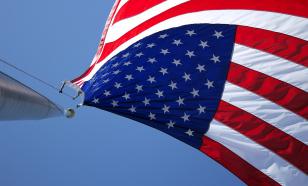NASA prepares to unveil plans on moon travel
Even before the official announcement, there is criticism from Capitol Hill over the reported $100 billion cost of the lunar program, given U.S. government commitments to the Iraq war and recovery from Hurricane Katrina.
"This plan is coming out at a time when the nation is facing significant budgetary challenges," Rep. Bart Gordon, a Tennessee Democrat on the House Science Committee, said in a statement. "Getting agreement to move forward on it is going to be heavy lifting in the current environment, and it's clear that strong presidential leadership will be needed."
To get astronauts back to the moon for the first time since the Apollo 17 mission in 1972, one team of designers envisioned an Apollo-style capsule sitting atop rockets fashioned from shuttle components, including the shuttle's massive external tank and solid rocket boosters. There would be a separate space vehicle to carry only cargo.
The Space.com Web site reported that this scenario was presented to White House officials last week before its formal unveiling to the public on Monday. The new $100 billion lunar program would begin in 2018 by landing four people on the moon for a seven-day stay, Space.com reported, reports Reuters.
Aspects are somewhat vintage Apollo in approach, but with numerous technical twists. For example, a four-person lunar expedition crew would make use of a Crew Exploration Vehicle that is outfitted with solar panels. The astronauts would rendezvous in Earth orbit with a pre-launched Earth Departure Stage, and then make the outbound voyage to the Moon.
Once in lunar orbit, all four crewmembers would ride down to the Moon in a lander. They would depart the Crew Exploration Vehicle, putting it in autopilot mode as they spend seven days on the lunar surface.
In comparison, six two-person teams landed at the Moon's equatorial region in the 1969-1972 timeframe as part of Project Apollo. Each expedition had an additional astronaut who remained in lunar orbit.
"This is a go-as-you-can-afford-to-pay kind of program," said Rex Geveden, NASA Associate Administrator. Last week, the White House "green-lighted" the plan, he said, giving NASA Administrator Michael Griffin the go-ahead to proceed with rolling out details to Congress and the public.
Geveden joined current and past NASA officials, university and industry experts in the Inland Northwest Space Alliance (INSA) Space Policy Institute meeting, held here September 16-18. The Missoula-based INSA is a private group created by the University of Montana in 2003. INSA is focused on broadening space-related research and commercial applications, particularly in the inland northwest.
The CEV will be tipped by an escape tower. With that tower, the capsule could be pulled free from a troubled booster ride. That hardware provides ten times a factor of safety than the space shuttle, Geveden explained.
An Earth-returning CEV would toss off its reentry shield after its fiery plunge. A parachute system would deploy, followed by a set of airbags to cushion the craft's touchdown on land, somewhere in the American West, Geveden said. Ocean recovery – like that done in the Apollo effort – is considered a contingency mode, he said.
A heavy-lift, cargo-only booster would also be shuttle-derived. That launcher incorporates the large shuttle external tank, use of a cluster of five space shuttle main engines, straddled by two five-segment solid rocket boosters. It would toss into orbit loads of hardware, like the CEV's Earth Departure Stage, the Space.com Web site informs.
Subscribe to Pravda.Ru Telegram channel, Facebook, RSS!


